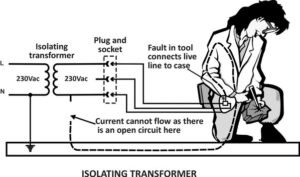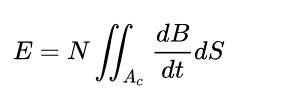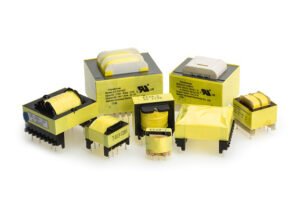
Why High Frequency Transformers Make of Ferrite Cores
In high frequency transformers the material used for core is ferrite cores because it has high resistivity, low high-frequency loss, easy mass production, good product consistency and low cost.

In high frequency transformers the material used for core is ferrite cores because it has high resistivity, low high-frequency loss, easy mass production, good product consistency and low cost.

1.Follow the instructions carefully to ensure proper operation
2.Voltage should be adjusted according to the rating
3.The cover should not be opened
4.Make sure you select a location that is suitable for installation

There are a number of basic characteristics of power transformers, which are as follows:
1.The iron cores of power transformers make them extremely heavy and over sized.
2.Iron core made of high-quality cold-rolled silicon steel sheet, shear burr less than 0.02 mm, full miter seam, no punching, no iron yoke. The core columns are stacked and double H glue is used to make the core three columns and two yokes a tight, flat and compact whole, thereby reducing the no-load loss, no-load current and noise.
3.There can be one or more primary and secondary windings on them.
… …

Potting is the process of filling or submersing a complete transformer using a compound material. Transformers can be bonded, sealed, potted, and coated with this glue.It is liquid before curing, and its viscosity varies with the material, performance and production process. Its use value is realized after the glue has completely cured, and it has many properties such as being waterproof, moisture-proof, dust-proof, insulating, thermal conductive, confidential, anti-corrosion, temperature resistant, and shock resistant.

Which is better for coils in high-frequency transformers: flat copper tape or litz wire?
In conclusion,use the Litz wire or flat copper tape based on the magnetic core size and the current.

10 key Advantages of Toroidal Transformers
1. High electrical efficiency:
2. Less magnetic interference:
3. Low temperature rise:
4. Low-temperature properties:
5. Lower Noise Level:
6. Low Off Load Loss:
7. Flexible design:
8. Small Size and lght weight:
9. Easy Installation:
10. More economical:

It can work, in fact, the transformer is usable in circuits ranging from 45Hz to 60Hz. The transformer 50/60Hz is widely accepted to be universal in use. The materials are the same, but there is a variation in the number of turns. Transformer coils operating at a power supply frequency of 50Hz require a little more per volt than those that operate at a power supply frequency of 60Hz. Thus, we find that the cores of both transformers are exactly the same…

Vacuum potting fix the lamination steel and bobbin, and at the same time, ensure that the transformer will not corrode when placed in the air for a long time. It is perfect for applications in harsh environments, where dust, lint, moisture and corrosive contaminants can accumulate.

Since traditional transformers can’t meet today’s efficiency requirements, high-frequency transformers were invented. High-frequency transformers improve efficiency, as well as save power, and have a longer service life than standard transformers.

The basic principles of step-up transformer and step-down transformer are the same.The main difference between a step-up transformer and a step-down transformer is their performance during their operation. The step-up transformer is designed to increase the output value, while the step-down transformer is designed to decrease it. Here, we discuss the differences between step-up transformers and step-down transformers, including definition, voltage,windings, conductor sizes, magnetic fields, and applications.
We will contact you within 1 working day, please pay attention to the email with the suffix “sales@unicreed-transformer.com”.